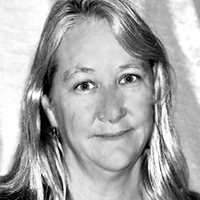What is Program Development?
I use a National Library of Medicine's definition which is,
"The process of formulating, improving and expanding educational, managerial or service-oriented work plans."
What is not explicit in that definition is that it is not just enough to develop it. It is understanding how programs are delivered and how they are maintained. They constantly need to be tweaked a little bit, monitored, and adjusted. Also note in this definition, there is no preconceived idea about the length or depth of the work that could be considered a program. Some people say a program is a single day event, while others say a program is a group. The largest version is a complete schedule, meaning what do you do from Monday through Friday, morning to night, and in some cases weekends. We are going to try and touch on a lot of that. I think the focus will be groups and then showing how it can be more of a complete schedule.
Most importantly, for today's presentation, we are specifically talking about psychosocial programming, but not necessarily limited to psychiatric settings. I believe strongly, and this will come across in everything I say, that occupational therapists need to do psychosocial programming in a wide variety of settings with a wide variety of populations.
Behavioral and Mental Health Settings
Let's take a look at the behavioral and mental health settings, more typical settings for psychosocial (Figure 1).
Figure 1. Typical behavioral and mental health settings.
There are of course acute care psychiatric hospitals as well as inpatient intermediate care facilities. I think you are all aware that long term facilities, or intuitions, have been on the decline since the institutionalization movement of the 1970s, but they do still exist. I do believe there is a world for occupational therapy in there.
I also believe we should be in the community, and that is a debate I have with a lot of my colleagues. We should be in the community, but I am always a little afraid of throwing the baby out with the bath water. Psychiatric hospitals, short or long term, still have a place for occupational therapy. Of course we have community mental health, and there are different versions of that. There is community treatment, and drop-in services. What we used to call outpatient services is what we call day treatment services.
In many places, community mental health is merging with treatment programs for alcohol and other drugs, or AOD. Typically, if you see services listed as behavioral health, the implication is that they provide both mental health and AOD services together. This is becoming the more common model and personally I think there are a lot of opportunities available for occupational therapists. We are also seeing a great increase in more social models vs. clinical models such as recovery and wellness centers. Again, I believe this gives a larger role for occupational therapists.
In a later slide we will talk more about different roles. In many cases, this may not be as a primary provider, but as a per person coach, mentor, or consultant. Keep in mind that both in the AOD programs, as well as recovery or wellness centers, these are typically staffed by people in recovery, or have a lived experience of mental illness or addiction. There are different strategies that need to be used to get OT in the door here. It may not be as the leader of it. They can and should be peer-driven, but we do have a role and have unique skills to offer.
